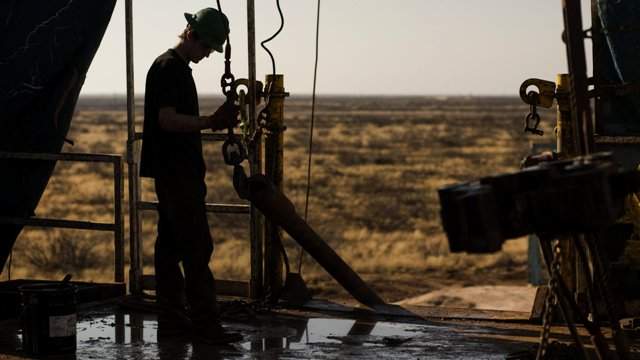With Brent crude already jumping to an almost four-year high on Monday, that’s exactly the kind of price surge President Donald Trump has been seeking to prevent by pressuring the Organization of Petroleum Exporting Countries to raise production. Yet the cartel and its allies gave mixed signals at a meeting in Algiers on Sunday, ultimately showing little sign they would heed U.S. demands to rapidly push down crude prices.
An oil price spike is starting to look increasingly possible, with a rerun of 2008 not entirely out of the question, according to a new report.
The outages from Iran are worse than most analysts expected, and bottlenecks in the U.S. shale patch could prevent non-OPEC supply from plugging the gap. To top it off, new regulations from the International Maritime Organization set to take effect in 2020 could significantly tighten supplies.
Read More : Crude Oil Prices could Rise to $100 a Barrel by 2019, Warn Merchants
Put it all together, and “the likelihood of an oil spike and crash scenario akin to the one observed in 2008 has increased,” Bank of America Merrill Lynch wrote in a note. BofAML has a price target for Brent at $95 per barrel by the end of the second quarter 2019. In 2008, Brent spiked to nearly $150 per barrel.
The supply picture is looking increasingly worrying, with Venezuela and Iran the two principal factors driving up oil prices in the fourth quarter. Notably, the bank increased its estimate of supply losses from Iran 1 million barrels per day (mb/d), up from 500,000 bpd previously.
OPEC Waits
For all these urgent supply pressures, the world’s largest oil producers adopted a sit-back-and-wait approach at their meeting in the Algerian capital on Sunday. Saudi Arabia, Russia and the United Arab Emirates insisted they had the spare capacity to satisfy the market’s needs, but wouldn’t tap it preemptively.
Read More : Saudi Arabia is said to be comfortable with Brent oil above $80
“Our plan is to meet demand,” said Saudi Energy Minister Khalid Al-Falih. “The reason Saudi Arabia didn’t increase more is because all of our customers are receiving all of the barrels they want.” The kingdom does expect to pump more in September and increase again in October, he said, without pledging specific volumes.
Major oil companies took some solace from OPEC’s assurances. While the group didn’t take action on Sunday, it seems set on making sure the market doesn’t get too carried away, said Mark Quartermain, Royal Dutch Shell Plc’s vice president for global crude oil trading and supply.
Oil at $100 may not be sustainable in the longer-term because demand may be threatened by the U.S.-China trade war and supply, especially from the U.S., was seen sufficient in the next 12 months, said Janet Kong, BP Plc’s head of trading in Asia.
Risky strategy
Using up crude inventories could save Indian refiners short-term import costs but poses the risk that if prices do not ease later on the companies will have to import more later at higher prices.
Despite this, the Indian government supports the plan, the two unidentified sources said. India’s Ministry of Petroleum and Natural Gas did not respond to an email from Reuters seeking comments on the plans to curtail imports.
Former BPCL Chairman RK Singh said India’s state refiners had resorted to this strategy in the past.
Read More : MCX Crude Alert : I Told You Lots of Time Crude Ultimate Target ₹5600, Watch High 5302 – Neal Bhai Reports
In 2013, BPCL halved its crude inventories to an average of 15 days of supply for its operations, when the rupee declined to below 68 to the dollar and oil prices were over $100 per barrel, he said.
Harsher Sanctions
When Trump in May announced plans to reimpose sanctions on Iran’s oil exports, the market estimated a cut of about 300,000 to 700,000 barrels a day, said Trafigura Group co-head of oil trading Ben Luckock. However, the consensus has now moved to as much as 1.5 million barrels daily as the U.S. is “incredibly serious” about its measures, he said.
Iran’s production “is going to be significantly less than it was, and probably lower than most people expected when the sanctions were announced,” Luckock said at the APPEC event. He sees $90 oil by Christmas and $100 in early 2019.
Brent crude, the benchmark for more than half the world’s oil, rose 2.5 percent to $80.56 a barrel at 11:40 a.m. in London, after earlier jumping to the highest level since November 2014.
OPEC isn’t just grappling with U.S. sanctions cutting Iranian supply. Output in Venezuela is also slumping due to an economic crisis. The biggest source of new global supply, U.S. shale, is also experiencing growing pains as pipeline bottlenecks and workforce issues hamper growth.
Balances are precarious and the lack of spare capacity could see crude pricing well above $90 or even $100, should all of the potential risk in the market materialize,” analysts including Ed Morse said in the note.
